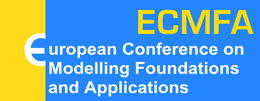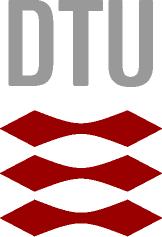8th European Conference on
July 2-5, 2012, Technical University of Denmark |
 |
Tutorial2:
Improving the quality of EMF models using metrics, smells, and refactorings
Monday, July 2, 1330– 1700, S16,
by Gabriele Taentzer, Thorsten Arendt (Philipps-Universitšt Marburg)Models are primary artifacts in model-driven software development processes. Therefore, software quality assurance frequently leads back to the quality assurance of the involved models. Such a model quality assurance process can be performed based on static model analysis and uses techniques like model metrics and model smells. Based on the outcome of the model analysis, appropriate model refactoring steps can be performed.
A common open source technology in model-based software development is the Eclipse Modeling Framework (EMF). EMF is a modeling framework and code generation facility for building tools and other applications based on a structured data model. Besides the opportunity to support domain-specific modeling languages (DSMLs), also more general languages like the UML are supported and some commercial modeling products (e.g., IBM Rational Software Architect) rely on the UML2EMF technology.
In this tutorial, we present an integrated and generic framework for the quality assurance of EMF-based models. From the user's point of view, we show how metrics and smells are reported and refactorings are performed on arbitrary EMF instance models. Afterwards, we present how new metrics, smells, or refactorings (e.g., for your own DSML) can be integrated using several techniques as concrete specification languages (e.g., Java, OCL, or the EMF model transformation language Henshin).
Target audience: Software developers using EMF as modeling platform; quality assurance manager in software development processes
Presenter: Gabriele Taentzer and Thorsten Arendt
Gabi Taenzer is professor for Software Engineering at the Department of Mathematics and Computer Science of the Philipps-Universitšt Marburg in Germany. She achieved the habilitation in Computer Science at the Technische Universitšt Berlin in 2003. Her research interests include model-driven software
development, especially domain-specific visual languages, model transformation and model quality assurance, and graph transformation. Since 2002, she is steering committee member for conferences on automated software engineering (ASE), ETAPS, and graph transformation (ICGT).
Furthermore, she has been program committee member of a variety of international conferences, especially on model-driven engineering such ECMFA, MoDELS, and ICMT. She has been involved in a number of research projects on model-driven software development.
Thorsten Arendt is scientific assistant at the Department of Mathematics and Computer Science of the Philipps-Universitšt Marburg. He received his diploma in Computer Science from the Philipps-Universitšt Marburg in 2008. Since graduation, he has been responsible for the development of model quality assurance tools EMF Metrics, EMF Smell and EMF Refactor. He has 10 years of IT experience with specific focus on model-based software development, quality assurance of software models, and model refactoring.

